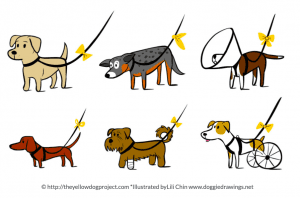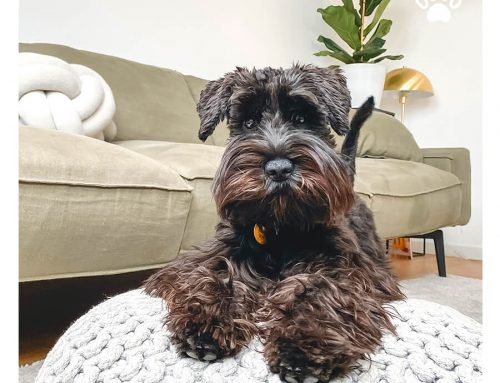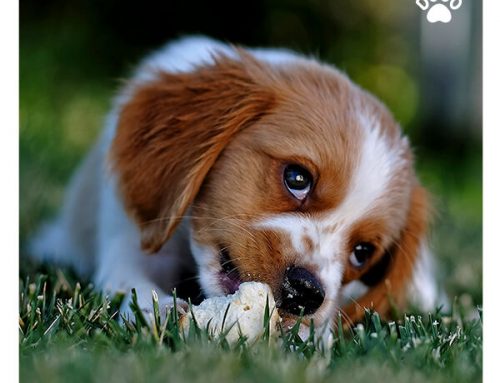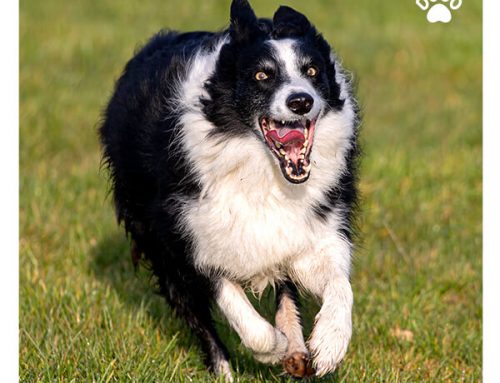
Sudden anxiety
Despite proper dog socialization, something can happen that frightens the dog so much that they become afraid of it. Quite a radical example of this is a dog that has never been afraid of people but has been hurt by a human and since then expresses fear in contact with people. There may also be other reasons, unexpected situations, accidents that will make the dog fearful.
Vicious circle
If our dog demonstrates a fear of animals or people, we often automatically start to avoid the sources of this fear and don’t confront the trigger. We walk our dogs in remote places, we avoid other pets. Avoiding the confrontation is not a solution and with less exposure to the trigger, it may worsen and deepen the fear.
Instead of avoiding the trigger, it’s important to gradually expose your dog to the source of their fear in a controlled and positive manner. One effective method is to use desensitization training, which involves gradually exposing your dog to the source of their fear while rewarding them for calm and relaxed behavior. This can be done by gradually increasing the proximity to the trigger and offering treats and positive reinforcement when your dog remains calm.
If our dog is afraid of other people, do not let them pet your pup, and best ignore the dog, allowing the puppy to decide if and when to approach. Unsolicited interactions could only reinforce the fear in your dog. Additionally, always make sure that your dog can escape the interactions and can hide or retreat from people. Otherwise, as a defense mechanism, your dog might express aggression from fear, biting the person. We suggest tying a yellow ribbon to your dog’s collar or leash. “The Yellow Dog Project” is getting more and more popular and is a signal for strangers not to approach the dog as they need more space. Alternatively, there are collars and vests for dogs that help people understand the meaning of the yellow color.

Positive reinforcement
When a dog is afraid of people and other animals, start positive reinforcement training with Dogo as soon as possible. On walks always carry treats with you. In the beginning, reward your dog for calm behaviour as often as possible. Play with them or train tricks when there are other people or dogs nearby. Adjust the distance to your dog’s abilities to make your pup feel comfortable. If your puppy is relaxed and focuses on you, rather than peaking at the strangers – gradually decrease the distance. Always observe and react to your dog’s body language.
With time, train closer and closer to others. Offer a treat also when they are quietly passing another dog or person. Additionally, you can ask your friend to help you with the exercise and just walk past you when you’re training. After some time your dog will understand that people are not a threat.
To get your dog used to other dogs you can use the parallel walks – we wrote about it here. Over time, you can increase the level of difficulty – try training in a busier, noisier environment with more people, dogs, next to a dog park, in the metro station, next to a kindergarten, etc. Just remember not to push your dog too fast and expect too much as it is very easy to lose the results.
Counter-conditioning
Another effective technique for helping a fearful dog is counter-conditioning, which involves pairing the source of their fear with something positive, such as a treat or a toy. For example, if your dog is afraid of other dogs, you can give them a treat every time they see another dog. Over time, your dog will learn to associate the presence of other dogs with positive experiences, which can help reduce their fear. It’s important to note that counter-conditioning should only be done in a controlled and safe environment, and with the guidance of a professional dog trainer if necessary.
Self-confidence

Various kinds of scent games will also be useful in working on your dog’s self-confidence. If you need inspiration, check out the Dogo App and the games section! Sniffing is a good distraction for your dog from other triggers, it is a good mental exercise that also calms dogs down. Besides, finding treats means success for your dog and a better mood.
Enthusiastic praise helps to strengthen the bond, boost your dog’s confidence and your dog will truly enjoy spending time with you.






